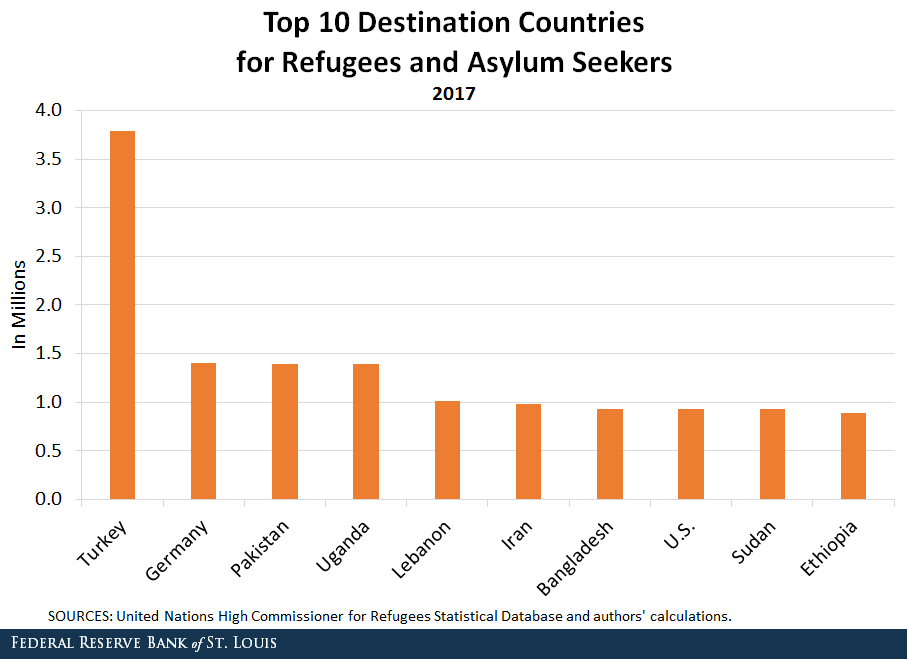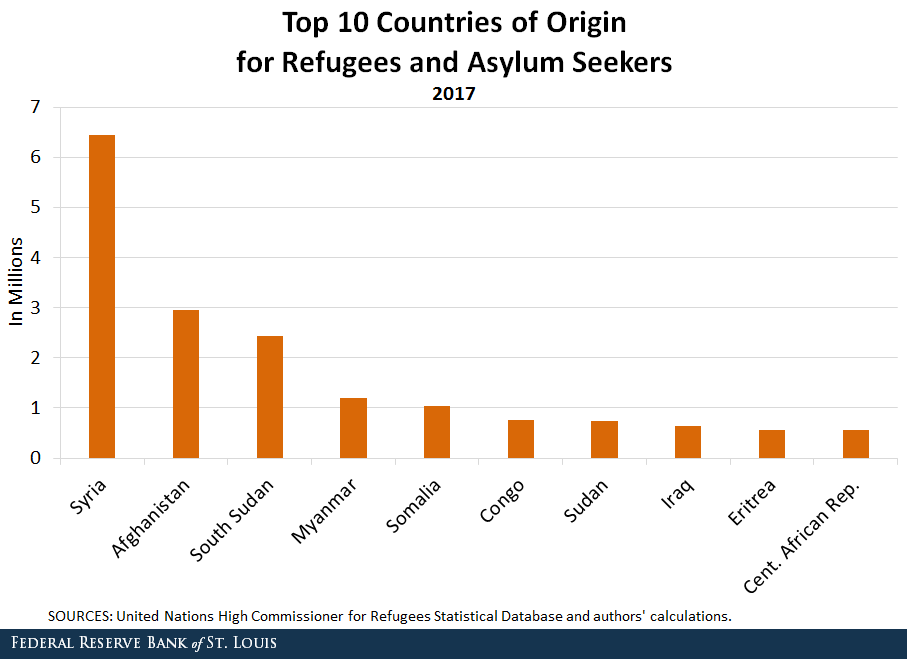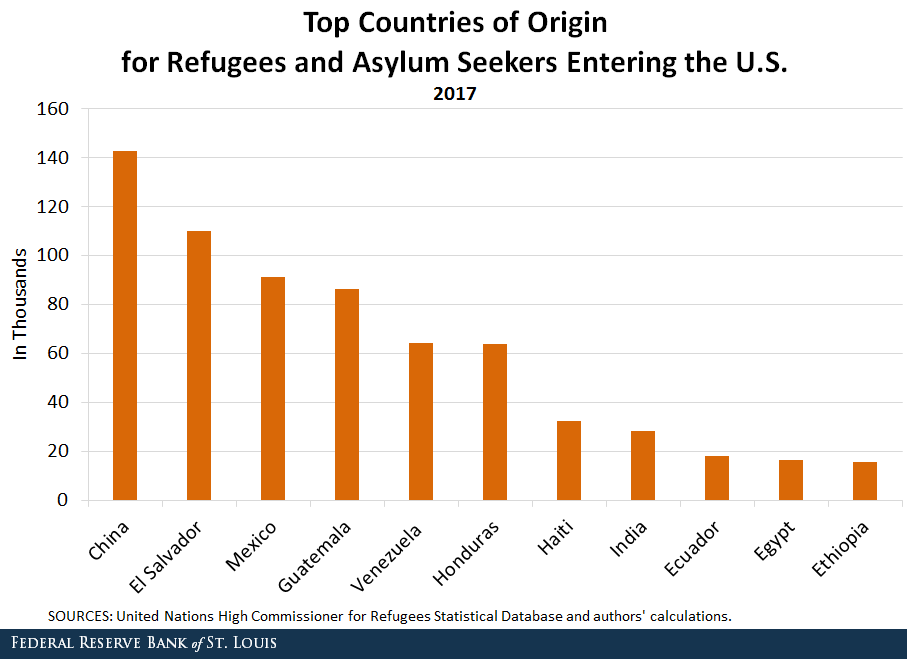Where Do Most Refugees Come From, and Where Do They Go?
The movement of refugees from Central America to the U.S. seeking asylum has attracted enormous attention. For ease of exposition, we included “refugees” and “asylum seekers” together in our use of the term “refugees.” For specific definitions of these two categories, see the United Nations Educational Scientific and Cultural Organization’s explanation of asylum seeker. This issue is tied to the broader immigration issue and its many economic, political and social angles.
The impact on the U.S. is relatively minor compared to what is faced by many developing nations, which lack economic resources or social and political institutions to deal with such a difficult issue. The figure below shows that the number of refugees increased through the 1960s until the early 1990s before dropping. It picked up again after 2011 when the Syrian civil war started.

Where Do Refugees Go?
The next figure lists the top 10 host nations of refugees.

Turkey—being a neighbor of Syria—bore the brunt of the refugee influx due to the Syrian conflict. German Chancellor Angela Merkel’s policy to shelter Syrian refugees perhaps contributed to Germany’s position as the second-largest host nation. The U.S. was the eighth largest, hosting around 0.9 million refugees in 2017.
Where Do Refugees Come From?
The figure below shows the countries of origin for refugees.

Syria was the largest source nation of refugees at around 6.5 million. Afghanistan was second at around 3 million, followed by South Sudan at 2.4 million. Not surprisingly, Pakistan and Uganda—bordering Afghanistan and South Sudan, respectively—were some of the largest host nations.
Where Do Refugees to the U.S. Come From?
The final figure shows the countries of origin for refugees entering the U.S. in 2017.

China was the largest source nation of refugees for the U.S. with 143,000 in 2017, followed by El Salvador, Mexico and Guatemala. However, because the scale of the total refugee migration to the U.S. is relatively small, contribution of any source nation is correspondingly minor.
Conclusion
Civil wars, violence and tyrannical regimes will keep displacing people from their homelands. Sensible international policy spearheaded by influential nations can help in reducing these problems at the source. Until that happens, refugees and many of their developing nation hosts—like Turkey and Pakistan—will struggle with the problem.
Developed nations like the U.S. and Germany are relatively more capable of paying for the economic costs of hosting refugees, but there are also social and political costs to consider. Assimilation of refugees into society and political life has its challenges. These are some of the issues that Germany is currently facing and that have since entered U.S. policy debate.
Notes and References
1 For ease of exposition, we included “refugees” and “asylum seekers” together in our use of the term “refugees.” For specific definitions of these two categories, see the United Nations Educational Scientific and Cultural Organization’s explanation of asylum seeker.
Additional Resources
- On the Economy: Immigration: Top Origin Nations and Top Destinations
- On the Economy: Immigration’s Effect on Future Workforces
- On the Economy: Today’s Immigrants Are More Educated than 50 Years Ago
Citation
Subhayu Bandyopadhyay and Asha Bharadwaj, ldquoWhere Do Most Refugees Come From, and Where Do They Go?,rdquo St. Louis Fed On the Economy, Jan. 31, 2019.
This blog offers commentary, analysis and data from our economists and experts. Views expressed are not necessarily those of the St. Louis Fed or Federal Reserve System.
Email Us
All other blog-related questions



